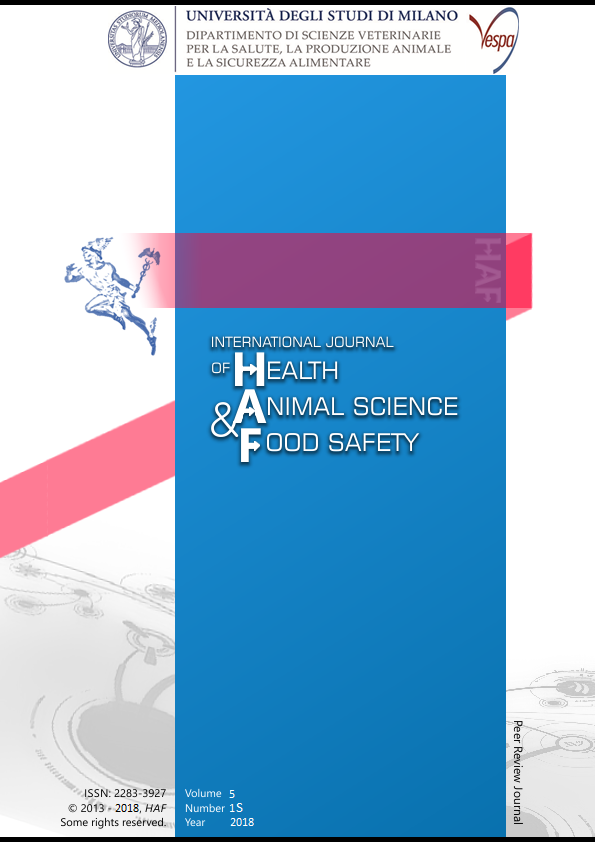Abstract
Harmonized data collection is essential to obtain a reliable picture of equine welfare conditions. Effective education on how to assess and score welfare indicators plays a critical role in terms of inter-observer reliability. The Horse Grimace Scale (HGS), a facial-expression-based pain coding system, is able to identify a range of acute pain conditions in horses. This study aimed at evaluating the efficacy of a standardized training on HGS inter-observer reliability.
Students in Veterinary Medicine from the University of Milan (N=46) and the University of Teramo (N=31) were recruited. Prior to any training, students were asked to score 10 pictures of horse faces using the six Facial Action Units (FAUs) of the HGS: Stiffly backwards ears, Orbital tightening, Tension above the eye area, Prominent strained chewing muscles, Mouth strained, Strained nostrils. Then, a 30-min training session was provided, including detailed descriptions and example pictures of each FAU, as well as a discussion of five pictures previously scored by an experienced assessor. After training, students scored other 10 pictures. To determine the inter-observer reliability pre and post-training, Intra-class Correlation Coefficient (ICC) was used.
Students’ reliability was good even before training (ICC=0,986 for the overall HGS score), with Tension above the eye area, and Strained nostrils appearing more challenging to be scored reliably. Reliability improved after the 30 min training for the overall HGS score (ICC=0,992) and for each FAU (see table 1). According to Cicchetti (1994), an ICC score between 0.75 and 1.00 can be considered excellent.
Our results suggest that the HGS scoring system is easy to apply even without any training; however, the training method applied proved useful to improve the reliability of HGS scores.
Riferimenti bibliografici
Cicchetti, D.V., 1994. Guidelines, criteria, and rules of thumb for evaluating normed and standardized assessment instruments in psychology. Psychological Assessment. 6(4), 284–290. doi:10.1037/1040-3590.6.4.284
Dalla Costa, E., Minero, M., Lebelt, D., Stucke, D., Canali, E., Leach, M.C., 2014. Development of the Horse Grimace Scale (HGS) as a pain assessment tool in horses undergoing routine castration. PLoS ONE. 9
Dalla Costa, E., Stucke, D., Dai, F., Minero, M., Leach, M.C., Lebelt, D., 2016. Using the horse grimace scale (HGS) to assess pain associated with acute laminitis in horses (Equus caballus). Animals. 3, 6(8)
Lecchi, C., Dalla Costa, E., Lebelt, D., Ferrante, V., Canali, E., Ceciliani, F., Stucke, D., Minero, M., 2018. Circulating miR-23b-3p, miR-145-5p and miR-200b-3p are potential biomarkers to monitor acute pain associated with laminitis in horses. Animal. 12, 366–375
This work is licensed under a CC BY-SA 4.0 international

